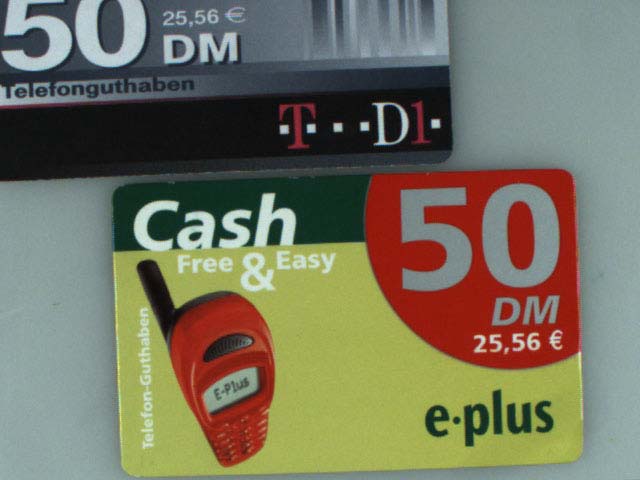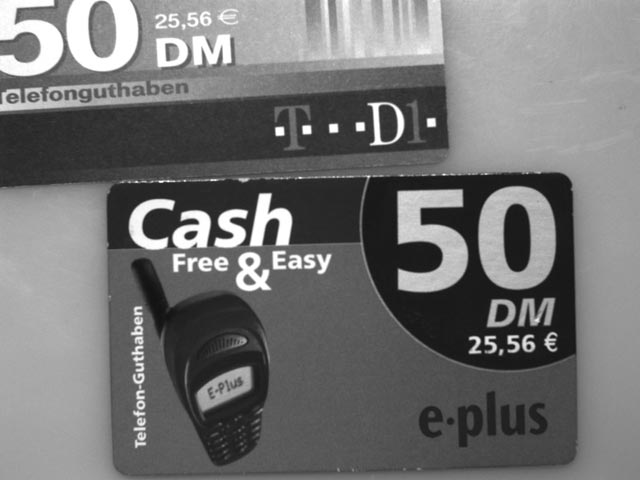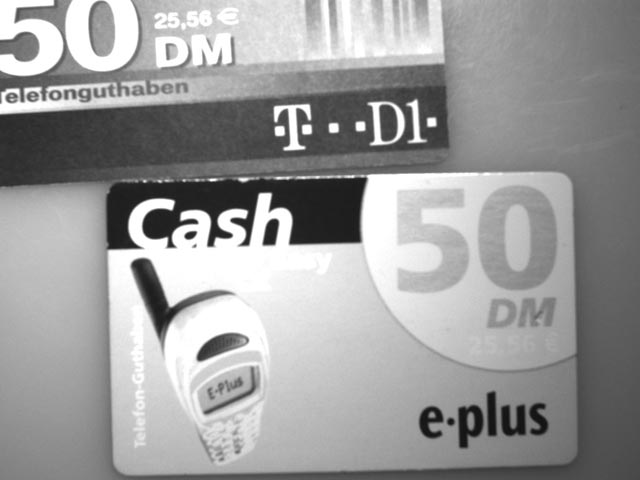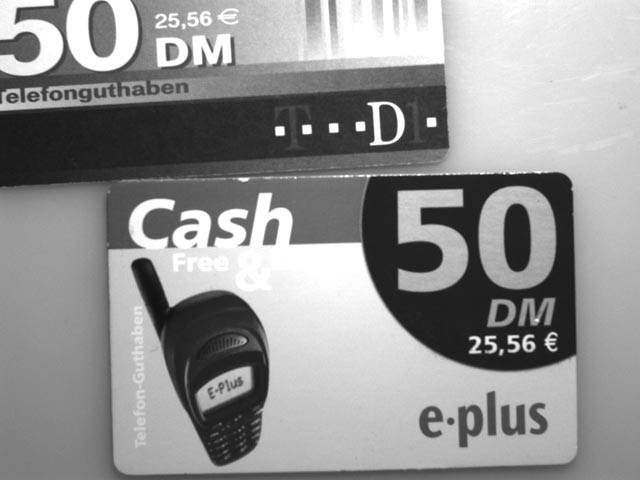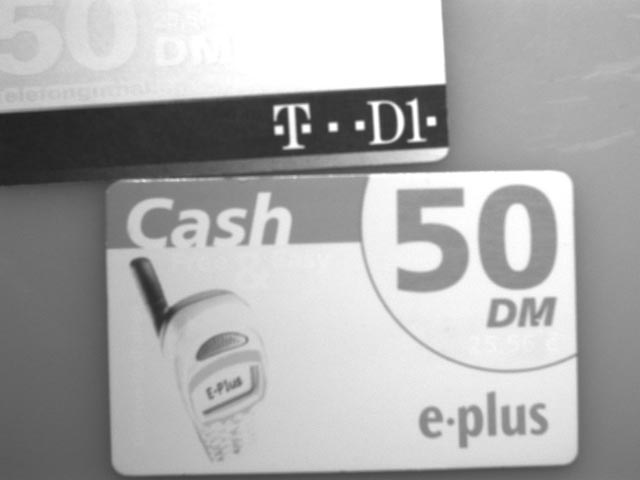Surface colour
The surface and material colour of the test objects have an essential influence on the resulting camera image. Colours absorb large quantities of the incident (mainly visible) light in addition to the mentioned surface effects so that the reflection proportion is additionally reduced. In this respect it is also important whether there is only an easily penetrable thin coat of paint on the object or the test object is completely dyed.
Daylight
White LED
Blue LED
Red LED
Green LED
Infrared LED
Skilfully harmonising coloured light with the colour of the test objects allows for an increase (or decrease) of the contrast of particular colours. In this way colours with similar luminance values in the grey image can be better differentiated. Red and neighbouring green thus result in different shades of grey. This is based on the principles of additive light and subtractive colour mixing. The use of a colour camera, which would also imply many disadvantages, can thus be avoided.
A peculiarity in the inspection of coloured objects is the use of infrared lighting. As the colours known to us only absorb light in the visible range of the light spectrum, no absorption takes place as a light colour beyond the visible spectrum is used here. Objects in red, green, blue, etc. don't absorb anything, but reflect the light and behave like a white surface. Further details can be found in the chapter "IR illumination".




